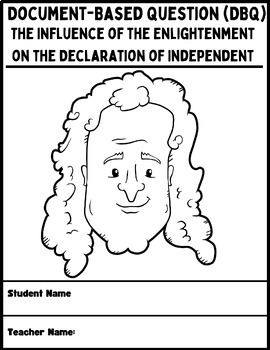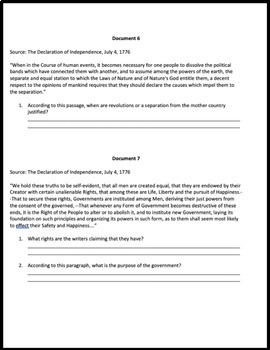The Enlightenment & Declaration of Independence: Document-Based Question (DBQ)
- Zip
What educators are saying
Description
DBQs are an excellent way to hit most of the Common Core standards in your class. If there is one activity that encapsulates the requirements of the Common Core - the DBQ is it!
Prompt: Analyze the impact that the Enlightenment thinkers had on the development and ideas expressed in the Declaration of Independence. There are a total of 7 documents.
Here is a list of the documents:
1. John Locke Two Treatises of Government, 1690
2. Jean Jacques Rousseau The Social Contract - 1762
3. Jean Jacques Rousseau The Social Contract - 1762
4. King James VI & I, True Law of Free Monarchies 1598
5. The Declaration of Independence, July 4, 1776 (Excerpt I)
6. Picture - Drafting of the Declaration of Independence 1776
7. The Declaration of Independence, July 4, 1776 (Excerpt II)
This product goes perfectly with this DBQ Outline and rubric, which is included!
Thumbnail clipart credit: By Prince Padania





